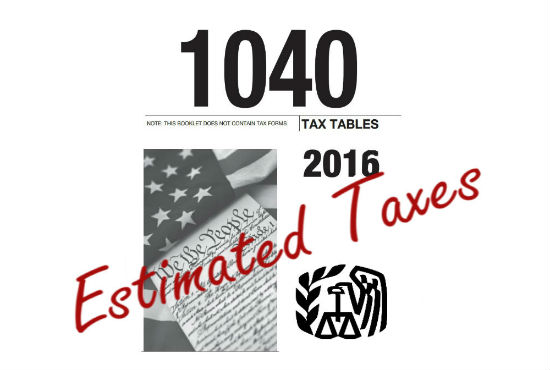By Justin Fundalinski, MBA | January 20, 2017

By the time you are reading this article it is too late to make any estimated tax payments for 2016. However, now is the right time to start thinking about estimated tax payments for next year. As many of our readers rely on various income sources in retirement, tax withholding is not as cut and dry as it was when employers took care of it all. Estimated taxes become an important thing to consider in retirement.
Do I need to pay estimated taxes?
The IRS wants you to pay your taxes throughout the year as you go. Unfortunately, you can’t just pay what you owe in April. So, how do you know if you need to make quarterly estimates? Well the IRS sets out some guidelines:
- If you owe less than $1,000 in taxes (after subtracting out your federal income tax withholding from the total amount of tax you owe) then you’re in the clear. But if you expect to owe more than $1,000 then you need to watch out more carefully.
- If your federal income tax withholding amounts to at least 90% of the tax you will owe this year then you are in the clear. For example if your tax bill will be $20,000 and you pay more than $18,000 throughout the year then you are in the clear. If not, then there is one more way out of avoiding estimated taxes (or penalties for that matter).
- If your federal income tax withholding amounts to at least 100% of the tax owed on your previous year’s return then you are in the clear (or 110% in the cases that your adjusted gross income is in excess of $150,000 for joint filers and $75,000 for single filers)
If none of these guidelines clear you of your duty to pay quarterly estimated taxes then it is important you make your payments timely to the IRS throughout the year or pay a penalty come April.
What if I don’t know what my income will be?
Unfortunately, the IRS calculates its default penalty by assuming that income is earned evenly throughout the year. For those who have income from self-employment, rental properties, S Corps, Trusts, or capital gains from divestments it is often hard to know when or how much taxable income you will receive let alone when you will receive it. So, there are a couple of routes you can take:
- Plan to pay 100% of your previous year’s taxes (or 110% in some cases as explained earlier). This is your safest approach but it may force you to pay taxes to the IRS that will later be returned to you. Sometimes you might not want the IRS banking your money for you for the better part of a year.
- Sway from the default penalty/estimated payment calculation and implement what is called the Annualized Installment Method. This installment method is helpful for those who have erratic income (or capital gains). Tax payers can use this method to make estimated tax payments based on their income as it is earned rather than evenly throughout the year. This method involves more in in-depth calculations and should be handled by a qualified professional.
If you have any questions regarding estimated tax payments please feel free to contact the office at any time.





